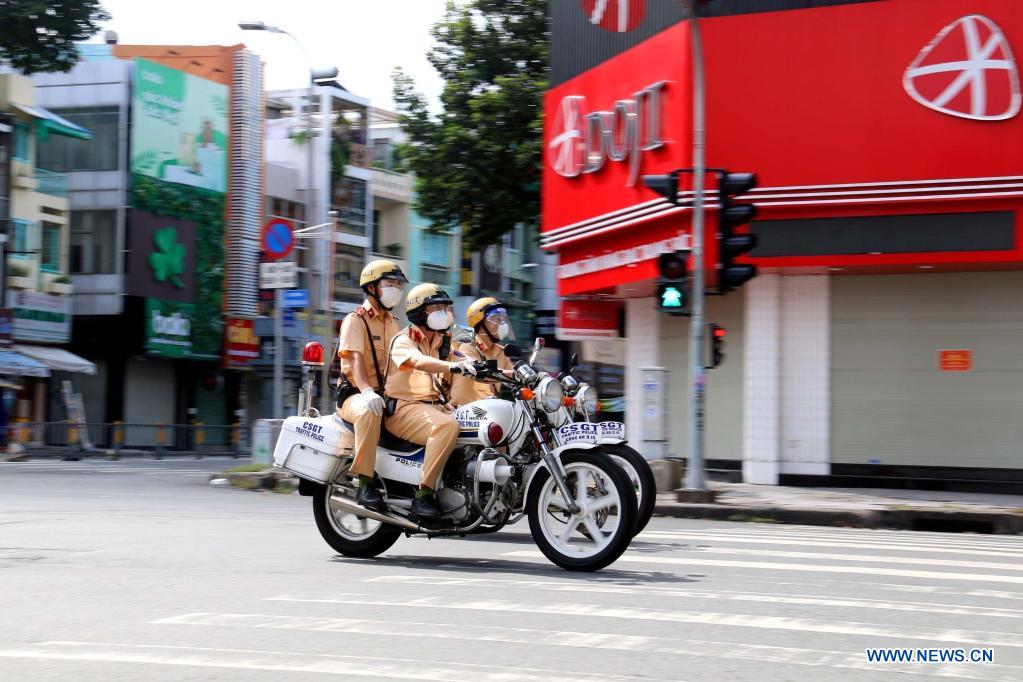
Editor's note: Ji Xianbai is an assistant professor at the School of International Studies at Renmin University of China. He is the author of "Mega-regionalism and Great Power Geo-economic Competition." The article reflects the author's opinions and not necessarily the views of CGTN.
For a long time, the global landscape of regionalism used to be dominated by two major trading blocs, namely the European Single Market underpinning the European integration project and the North American Free Trade Area (now substituted by the U.S.-Mexico-Canada Agreement) that cemented the central role of the North American economic circle within the world economy.
That bipolar, Euro-Atlantic-centric state of affairs – reminiscent of the erstwhile imperial world order – is now behind us with the emergence of a tripolar pattern. This is because the historic Regional Comprehensive Economic Partnership (RCEP) is taking effect today in 10 thriving Asia-Pacific economies: Australia, Brunei, Cambodia, China, Japan, Laos, New Zealand, Singapore, Thailand and Vietnam. (The deal will become operative in South Korea a month from now.)
Once four remaining countries (Indonesia, Malaysia, Myanmar and the Philippines) complete respective domestic legislative procedures to enforce it, the RCEP will be the world's largest regional trade arrangement.
Although not superseding pre-existing crisscrossing trade agreements in place between the Association of Southeast Asian Nations (ASEAN) and its Dialogue Partners, the RCEP in effect simplifies regional trade rules, adopts pro-integration rules of origin, enhances cross-border coordination in services exchange, promotes the involvement of micro, small and medium enterprises in international commerce, and lays a solid foundation for future cooperation on digital economy and regulatory coherence.
As is widely known, India, having been a founding member of the RCEP, pulled out at the last minute. But since India was not a hub economy of the RCEP grouping, the Indian withdrawal will not constitute too serious an impediment to other RCEP participants, especially the developing economies in Southeast Asia, in reaping the benefits of closer economic integration with each other and with Northeast Asian and Pacific economic heavyweights.

Traffic police patrol on a street under intensified social distancing amid the COVID-19 pandemic in southern Vietnam's Ho Chi Minh City, August 23, 2021. /Xinhua
Traffic police patrol on a street under intensified social distancing amid the COVID-19 pandemic in southern Vietnam's Ho Chi Minh City, August 23, 2021. /Xinhua
The Southeast Asian economies have been badly hit by the debilitating COVID-19 pandemic, which has resulted in massive job losses, capital flight, factory closures and fiscal difficulties in much of the region. In 2020, all but four Southeast Asian countries (Brunei, Laos, Myanmar and Vietnam) recorded negative economic growth.
To be sure, the region's road to economic recovery will be filled with uncertainty and difficulty and be dependent on the global path of vaccination and economic healing. Yet, the timely enactment of the RCEP agreement will surely provide a regional economic, legal and institutional framework in which interconnected economic growth can be facilitated and catalyzed.
Together with the Belt and Road Initiative (BRI) aimed at improving connectivity across nations, the RCEP will help pull Southeast Asia out of the economic trough. The newly unveiled China-Lao railway linking the southwestern Chinese city of Kunming to the Laotian capital of Vientiane that forms part of the BRI, for example, has provided much hope for jumpstarting the landlocked Lao economy in the RCEP era.
Looking forward toward a post-COVID-19 epoch, one cannot help but wonder how the RCEP could develop in the next stage. I see rich potential for the RCEP to become a pan-Pacific trade arrangement encompassing all countries in the region. Some would expectedly point to the Asia-Pacific Economic Cooperation (APEC) and the Comprehensive and Progressive Agreement for Trans-Pacific Partnership (CPTPP) as two alternative bases on which trans-Pacific economic cooperation can be structured. But the former is a loose framework marked by heightened voluntarism whereas the latter is too legalistically demanding to be inclusive. The high technical standards embodied in the CPTPP template and its insensitivity to disparate national economic and political circumstances of the region suggest that wide application of its rules and provisions is not feasible in the near to medium term.
In November 2020, Chinese President Xi Jinping called for efforts to build an Asia-Pacific community with a shared future, laying out China's vision of leveraging regional integration and economic cooperation for lasting peace, common prosperity and cultural harmony. If there is one thing that best epitomizes that vision, it would be the RCEP. As the deal goes into effect, an Asia-Pacific community of a shared future is emerging.
(If you want to contribute and have specific expertise, please contact us at opinions@cgtn.com.)

